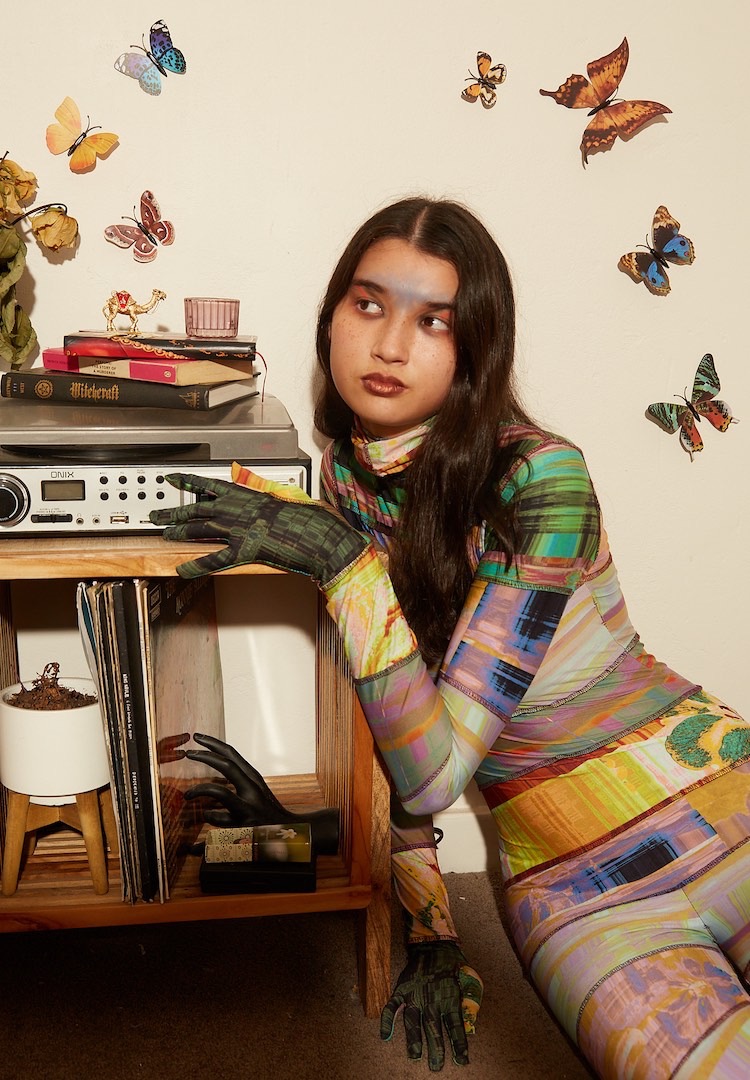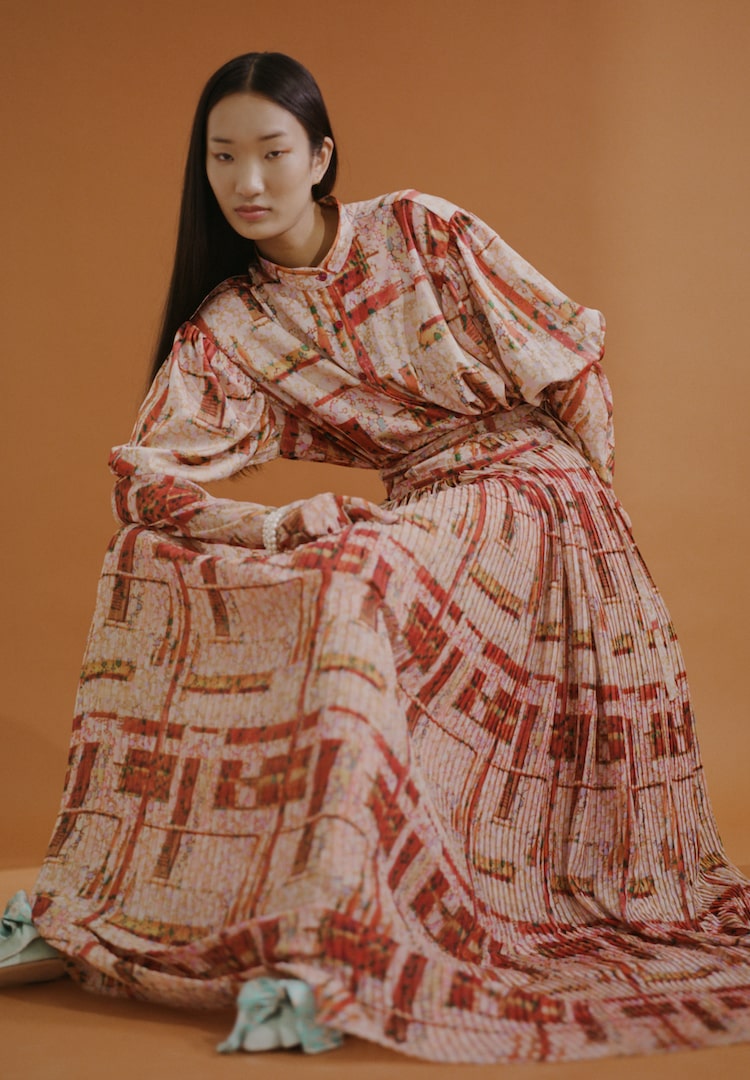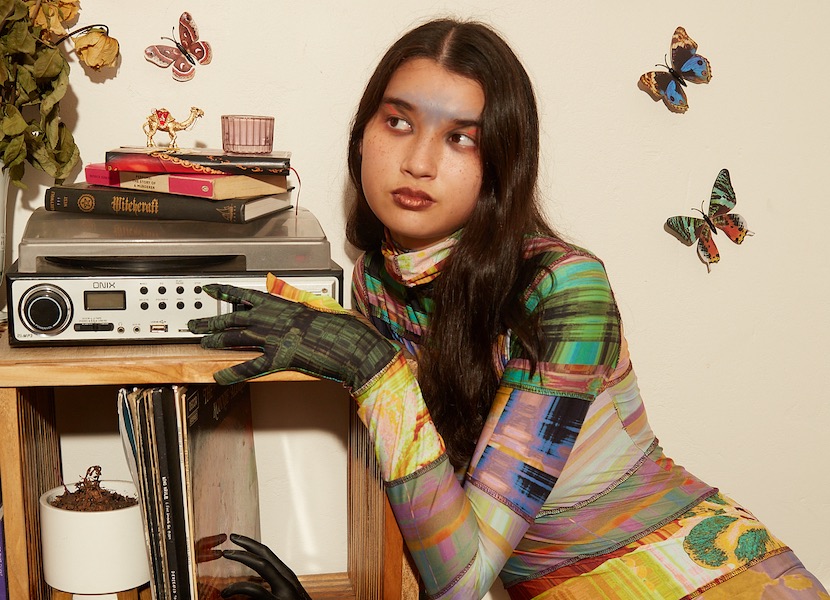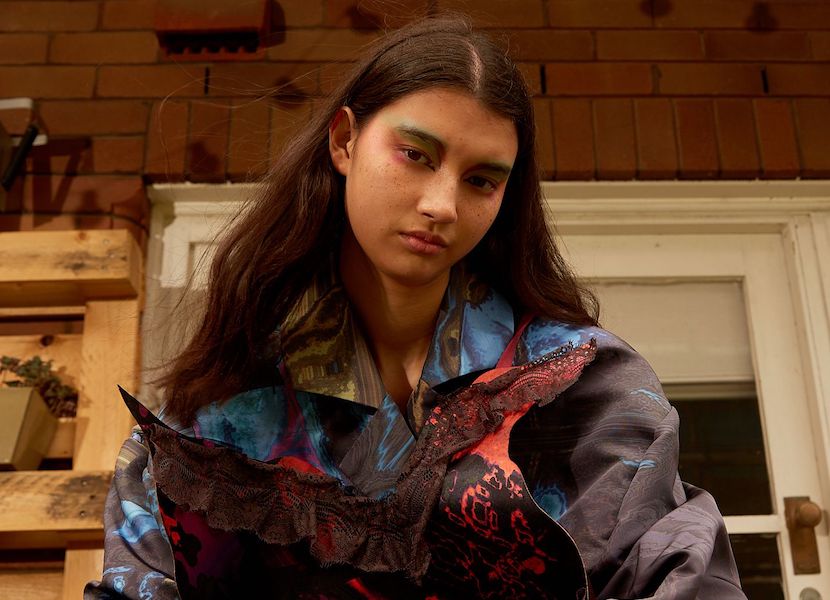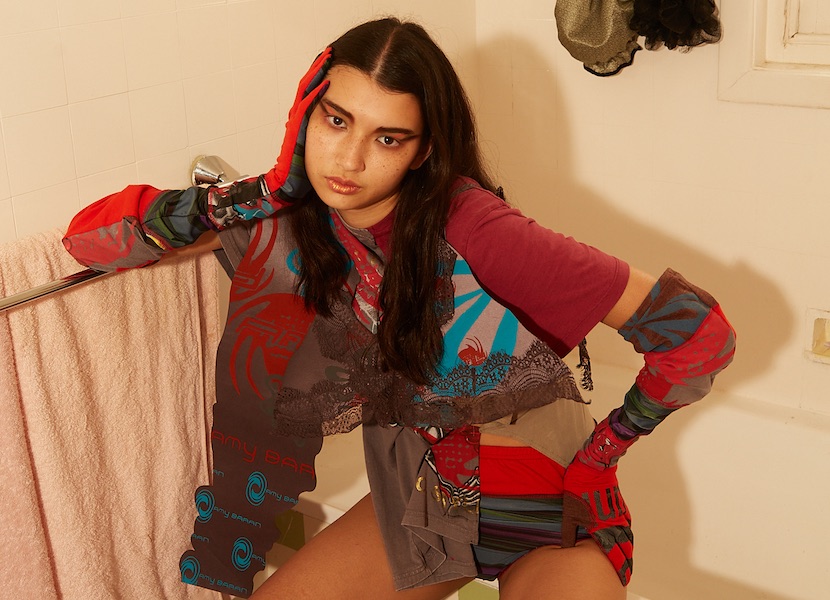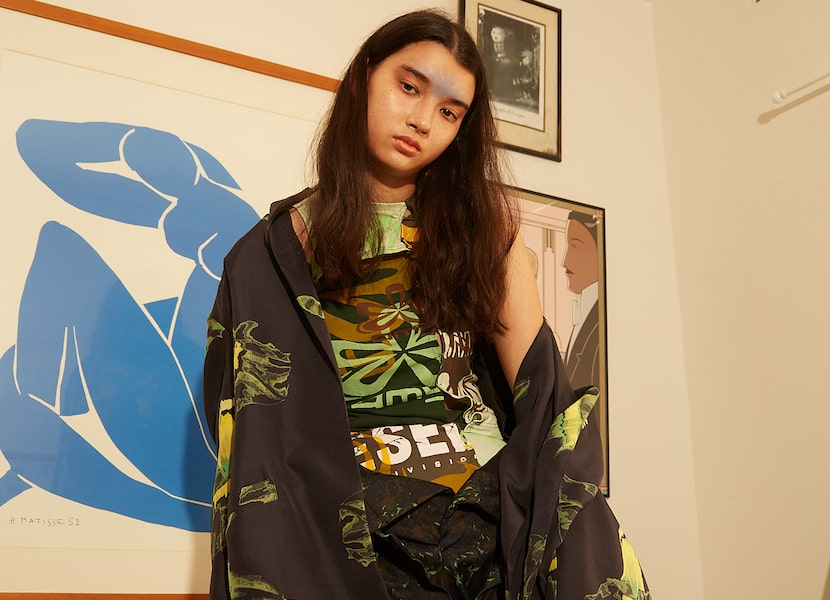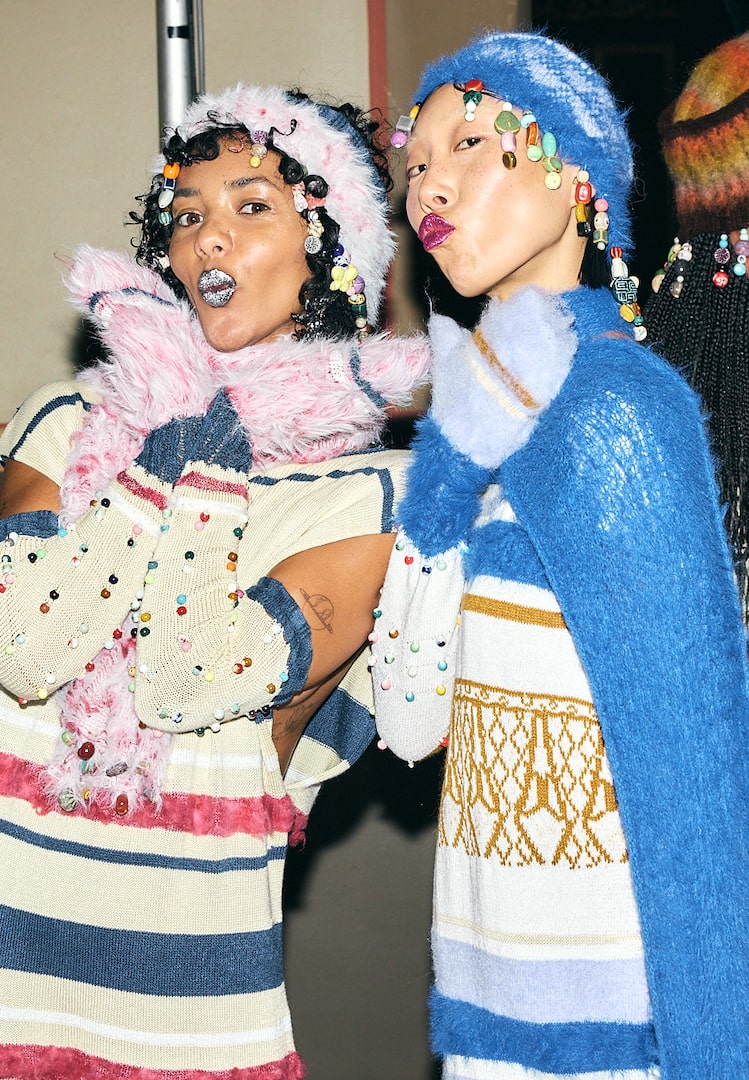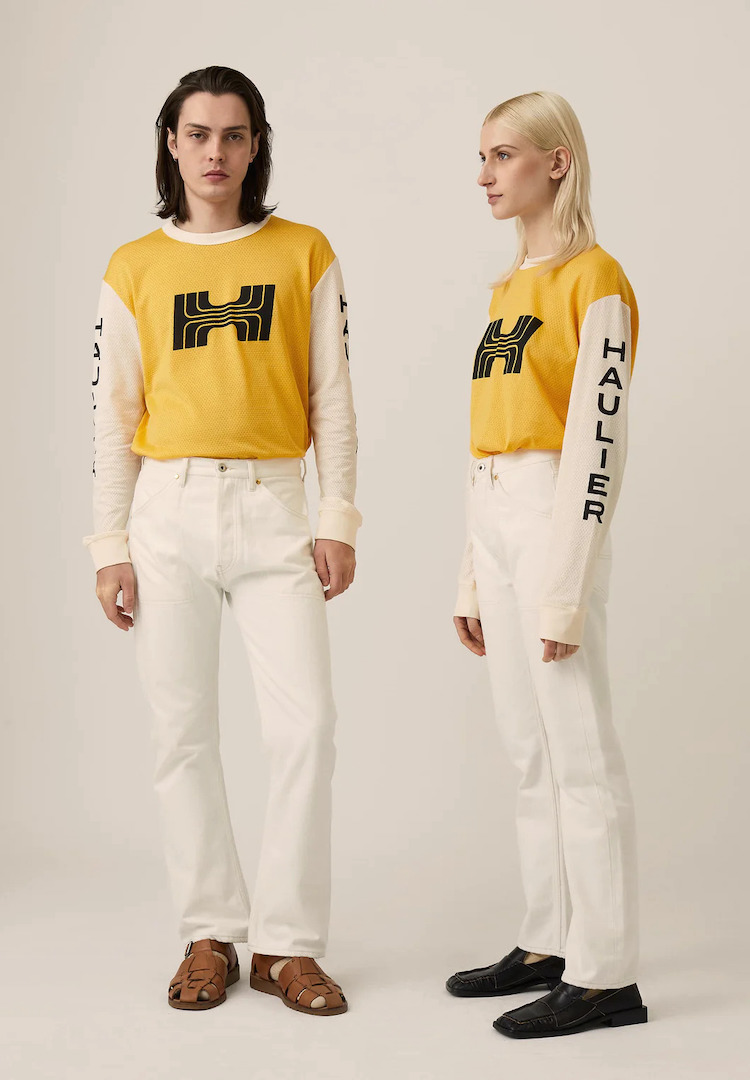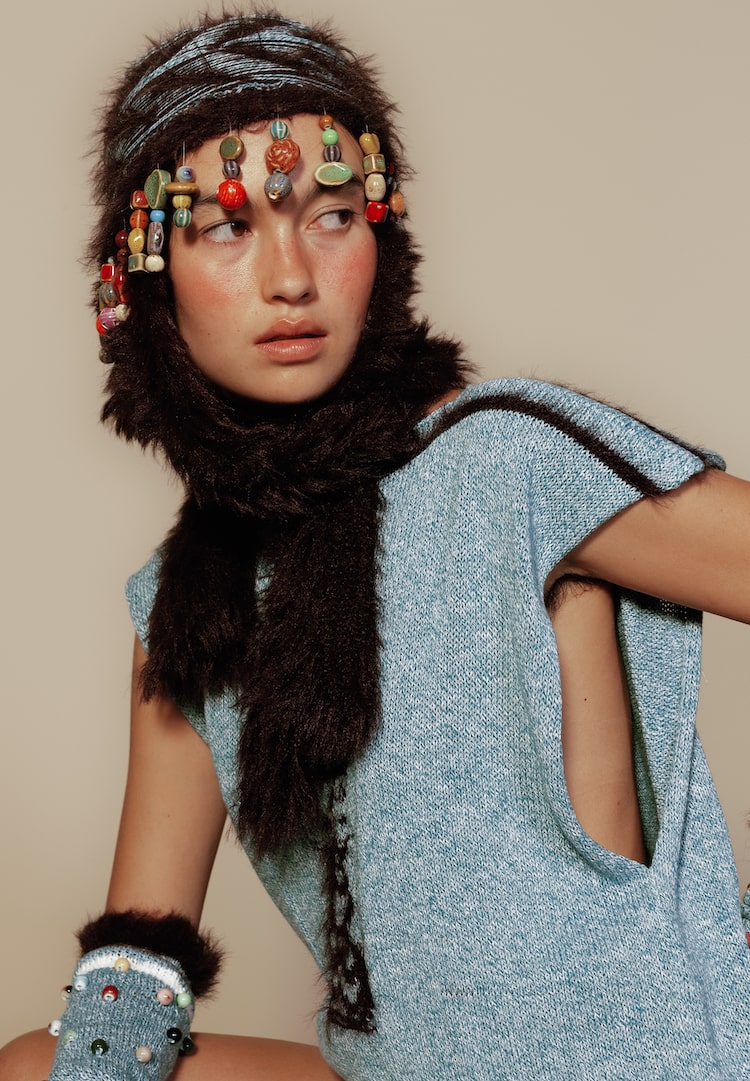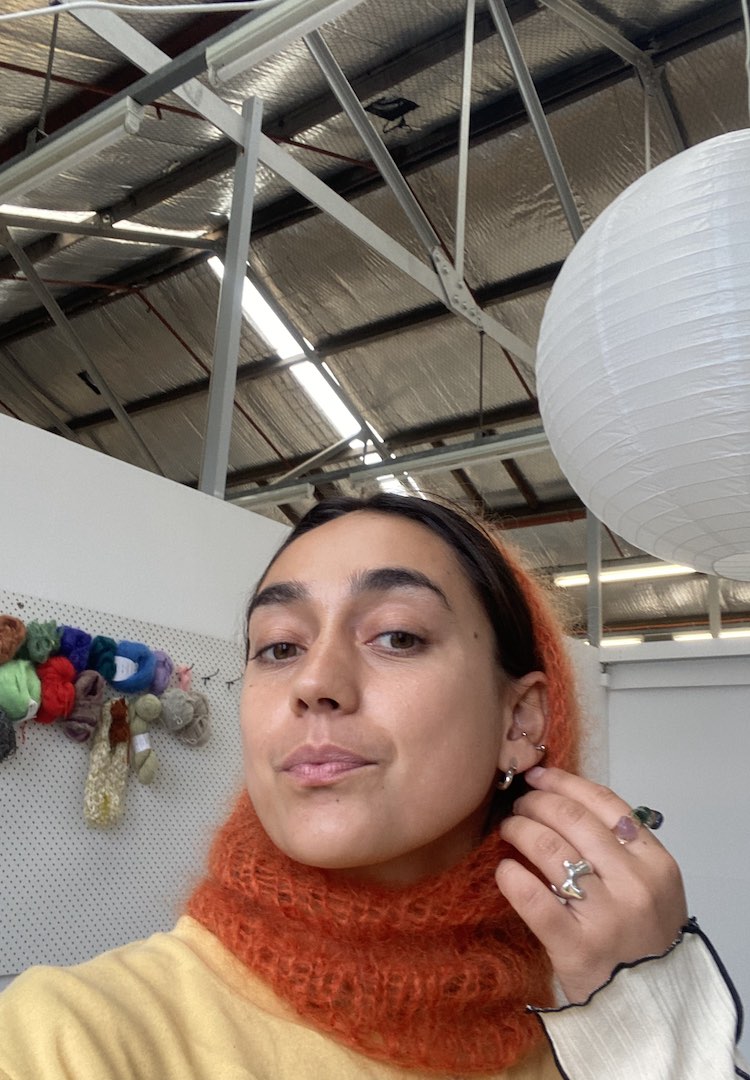The emerging designer using fashion to explore the impact of social media on what we wear
Photography by Lexi Laphor
Words by Tiffany Forbes
Future nostalgia.
Carefully balancing modernity with a sense of nostalgia, designer Amy Baran’s Melbourne Fashion Festival National Graduate Showcase collection sets out to explore the millennial and Gen Z experience of a digital age.
Titled Glitch, it explores how social media has redefined fashion from an exclusive and elite practice to one of accessibility and self-expression.
Looking to procrastinate in a productive way? Subscribe here and we’ll send more great reads straight to your inbox.
With designs that go against the grain and act as a rejection of the world as we know it, Amy hopes her collection sparks joy for those who feel left behind by the turbulent nature of life in the modern world.
I sat down to chat with the young finalist to get a taste of how she managed to pull off such a captivating collection (all while working exclusively from her bedroom) and what inspired her focus on youth.
Please introduce yourself to our readers.
Hi, I’m Amy Baran and I’ve just graduated from a fashion and textiles honours program at the University of Technology, Sydney, specialising in textiles and digital print. I also do screen printing as well. My work is an exploration of myself and my friends and my community. A lot of my ideas stem from my own experiences. It’s almost corny to say, but I love just doing what makes me happy because, in the end, that’s all that really matters to me.
When did you know you wanted to get into fashion design?
It was a bit of a roller coaster ride when I was in high school. I started off when I was 13 and I knew I wanted to be a fashion designer. Then for some reason I decided, no I want to do other aspects of design, so by the time I got to year 12, I had told everyone a million different things. I remember even wanting to be an interior designer at one point! In the end, I came back to fashion design and I can’t really imagine myself doing anything else now.
Tell us about your collection Glitch.
All through third year, before designing my collection, I decided that I wanted to make something that was really meaningful and would make an impact on the world. With everything that’s happening and all these political issues – which I care a lot about – the end goal is just for the general population to be happy. If you think about it, that’s what all these political movements are about, just ensuring the quality of life for other people. This got me thinking, I don’t want my collection to be about an actual movement itself, what I care about is the people around me and as I keep saying, our happiness. So, I wanted to make something for people to look at and just feel joy. That’s why this collection embodies the spirit of millennials and Generation Z who find solace in self-expression.
What made you want to focus on the themes of youth and nostalgia?
I’ve always designed with my generation and youth in mind. For example, 2019 was almost like a year off for me and I spent so much time with my friends. I care about them so much and I really wanted to include them in my work, so I did. It also relates to me – I’m 24 and I think the most authentic work comes from your own experiences, so making designs that reference youth and nostalgia is just me working with my own experiences.
Tell us about the experience of putting together your graduate collection. Were there any challenges?
It was actually such a crazy experience. Usually, the amazing thing about uni is being there with a community of people and being able to bounce your ideas off of each other. Also, I just feel like I’m more productive when I am in a workspace with others around me, so when we didn’t have that for most of the year, it was really difficult. Even when we started to get access to the spaces, I didn’t think it was worth going in for a few hours, only to take an hour to pack up and go home. So, I had to start doing things completely different and I had to start disciplining myself to actually get stuff done without people motivating me.
What role does sustainability play in your design practice?
If we want to live in a sustainable future, the answer to that is recycling and upcycling because we have an enormous amount of resources in the world. Scarcity, especially in clothing, is just not a thing. So, I really wanted to upcycle in my collection because that was important to me. I always try to source ethical fabrics and I know it’s really difficult being a young designer and having limited resources (especially this year), but I think it’s something we have to start training ourselves to do because it’s the future of sustainability and fashion.
For Glitch, I actually started off using my dad’s old T-shirts to print on – he’s a Bondi boy, surfer, no shoe type of person, so he has some really old really tattered shirts, which I actually love. I was also getting T-shirts from Vinnies and I started printing over the old logos that were already there. So, on one hand, the T-shirts are sustainable and reference the youth culture that is important to my collection, but on the other, it’s also a sense of nostalgia. And nostalgia brings joy, which was a big part of it as well.
What’s next for you?
I want to keep doing my own thing. I think making this collection opened up so many things I want to explore. It almost feels like this with every project I do, you get to the end and once you’re finished and you look at it, you just think of all these new ideas, so I just want to continue the momentum that I have and start working on my own stuff. I would love to also really hone in on my textile designs. I see being a textile designer in my future somewhere along the way.
You can find Amy Baran at @_amybaran or browse her collection online here.


